There was a time when buildings were made of concrete, nowadays glass is used. But shortly skyscrapers will be made of Transparent Solar Panels. Believe it or not, but a team of researchers at MIT achieved a breakthrough in the field of Solar by developing Transparent Solar Cells.
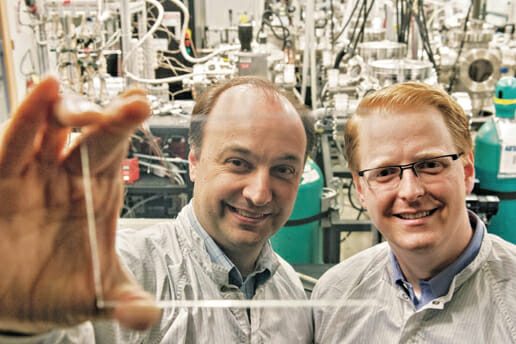
Inventing a new solar technology, to compete with the existing one is a challenge in itself. But a transparent photovoltaic cell (PV) is a Game-changer. “You can deploy it on an existing surface without modifying the look of the underlying material”, says Professor Vladimir Bulović professor of Electrical engineering and MIT’s Microsystems Technological Laboratories.
Trying is Another Way of Innovating
Many other research groups had previously tried to make ‘Pellucid’ solar cells with opaque PV materials. They made it so thin that they appeared translucent. Segmentation is the process of mounting pieces of solar cells on windows with gaps to see out. But these approaches generally entail a barter between Transparency and Efficiency. “When you start with solid PV materials, the more you make the material glassy, the less effective it becomes”, says Miles Barr Ph.D. ’12, president and CTO of Ubiquitous Energies, Inc.

Semi-transparent Perovskite cell achieved peak AVT of 77% and 12.7% efficiency.
[ Source – Science Direct ]
Transparent Polymeric Solar cell having active polymer hetero-junction, PBDTT-DPP: PCBM, and Ag nano-wires as the cathode.
[ Source – Science Direct ]
An Extra-Ordinary Thought

The Transparent Revolution gained momentum when Richard Lunt an MIT postdoc and assistant professor at Michigan State University decided to use the properties of Glass itself. He speculated making a solar cell that would absorb all the light except the part that allows us to see. Light, being electromagnetic radiation gauging a spectrum of wavelengths, each containing energy that can be potentially harvested by a solar cell.
But we can see only a part of the spectrum, so-called visible light. With the right combination of design and material, the light that we detect would be able to pass right through it and we’d never be aware of it.
Putting The Suggestion Into Action
Inspired by Dr. Lunt’s design and using some wit. The team instead of trying to create a transparent PV cell, they used a Transparent Luminescent Solar Concentrator (TLSC). As big as the name sounds the tech is as simple and brilliant. TLSC consists of organic salts that absorb light in UV and near-infrared region(NIR) and luminescence (glow) emitting another wavelength of Infrared light. This light is then guided to the edge of the underlying material (generally glass) where thin strips of conventional PV cells convert it into electricity.
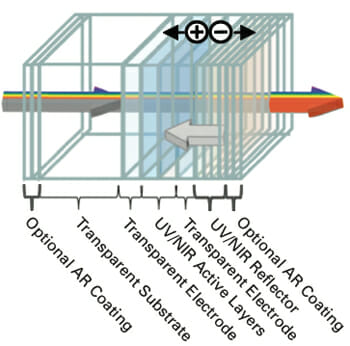
Previous ideas focused on thin active layers with absorption concentrated in the visible region providing a very low efficiency of <1 % or poor average visible-light transmissivity (AVT) of 10-35 %. Since both these factors could not be optimized simultaneously. They created a heterojunction Organic PV cell utilizing a molecular organic donor, chloroaluminium phthalocyanine, and organic acceptor, C60 (Fullerene), the perfect material that works in NIR and UV spectra.
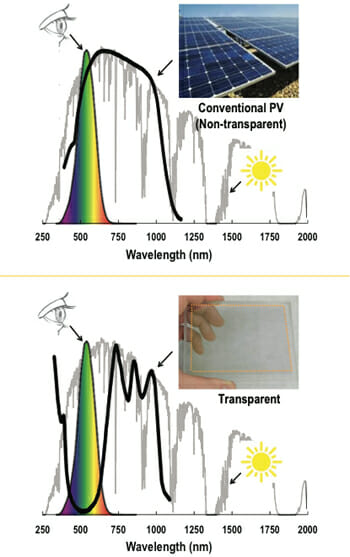
The Setup Of Transparent Luminescent Solar Concentrator
The anode of the cell is coated with Indium-Tin Oxide (ITO), ClAlPc, C60, Bathocuproine (BCP), and MoO3. ITO and MoO3 are the fundamental materials for the transparent electrode, while BCP increases power conversion efficiency by 3% also acting as a buffer layer between Al and C60. The cathode is coated with Ag. The transparent NIR mirror grown separately on quartz called Distributed Bragg Reflector (DBR) was coupled with diffraction gratings.
The role of DBR is to trap the NIR light creating a crystal such that it reflects all the NIR light to prevent leakage from the backside. Diffraction gratings bend the incident light at oblique angles to increase the optical path length. Broadband Anti-reflective coatings are also used to minimize the leakage of light on the backside of panels.
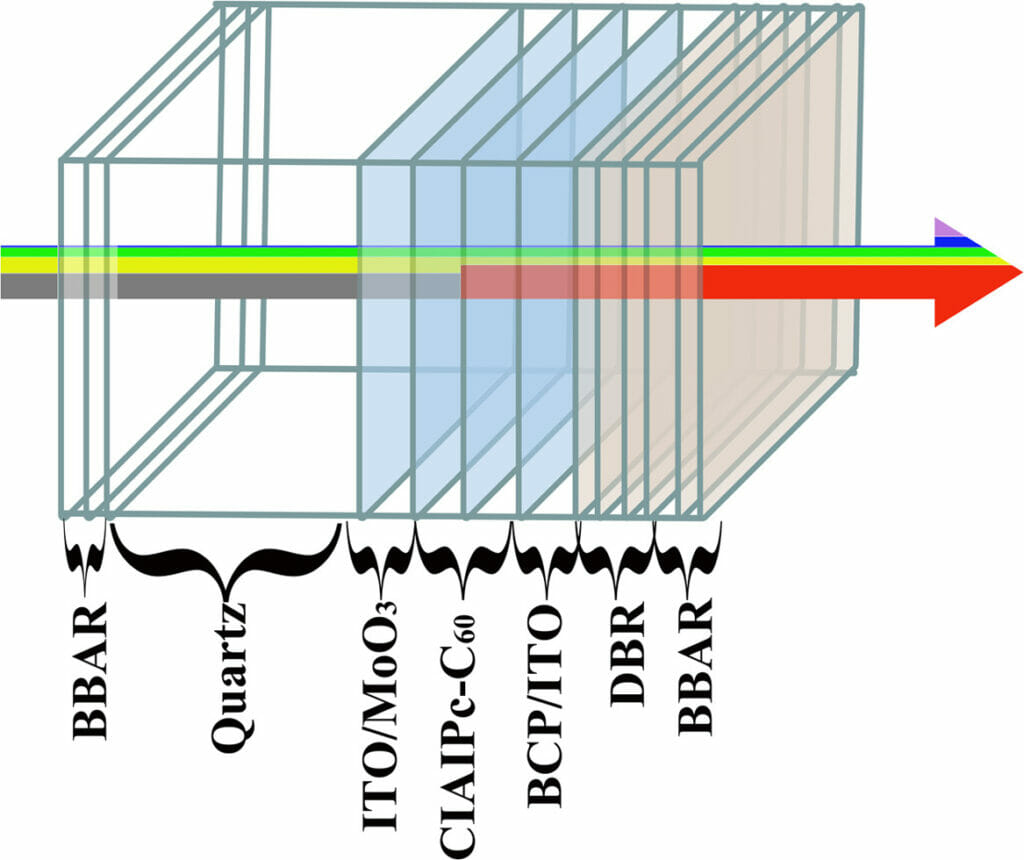
[ Source- Science Direct]
Although the most special ingredient is NIR fluorescent transparent dyes. These chemically engineered dyes absorb UV and NIR light, emitting visible light. This Marvelous dye is developed from a luminophore blend of canine and cyanine salts.
Change: Coming Soon
The most awaited moment in a researcher’s life is the result of his invention. “Our panel maxed transparency at 86% which was an accomplishment in itself not yet achieved by any other transparent PV cells”, says Dr. Bulović. But success often comes at a price, “Our panel’s efficiency was ver low-around 2%”.
In a detailed theoretical publication, Dr. Lunt and Dr. Bulović and others calculated that their design could reach an efficiency of up to 12% as compared to conventional solar cells. An array of Transparent cells “Stacked” was able to reach an efficiency of 10%. But the team believes that they could reach the limits by carefully configuring PV materials.
Ubiquitous energy states that applications for these panels are almost limitless. And the better part is that the solar windows not only slashes cost but also cut air-conditioning cost since the large part of the light that raises temperature is absorbed. And for the best part, these coatings cost little and are applied at room temperature making them easy to deposit. They could also be retrofitted onto existing glass panels infrastructure at a low cost. Assuming just 5% efficiency and a vertical area footprint of a normal skyscraper, the power generated could fulfill more than a quarter of all the electricity needs of the building.
In 2016 the prototype was launched ( 1 ft * 1 ft) with the highest transparency achieved and an efficiency of 7.6 %. The company entered into a partnership with various glass manufacturers. This company promises Clean Power View technology and we will be looking right through it.
Check out the other posts related to Technology written by our authors at thehavok.com


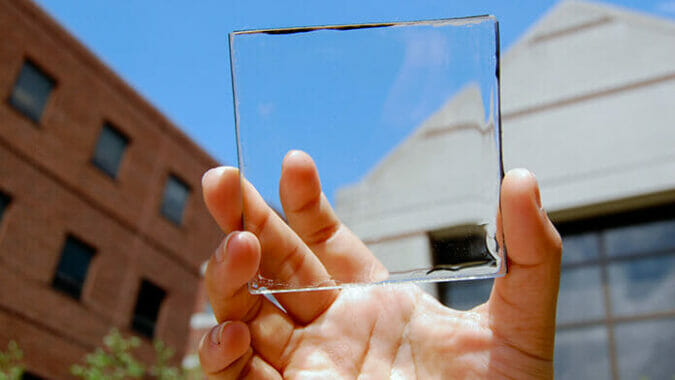

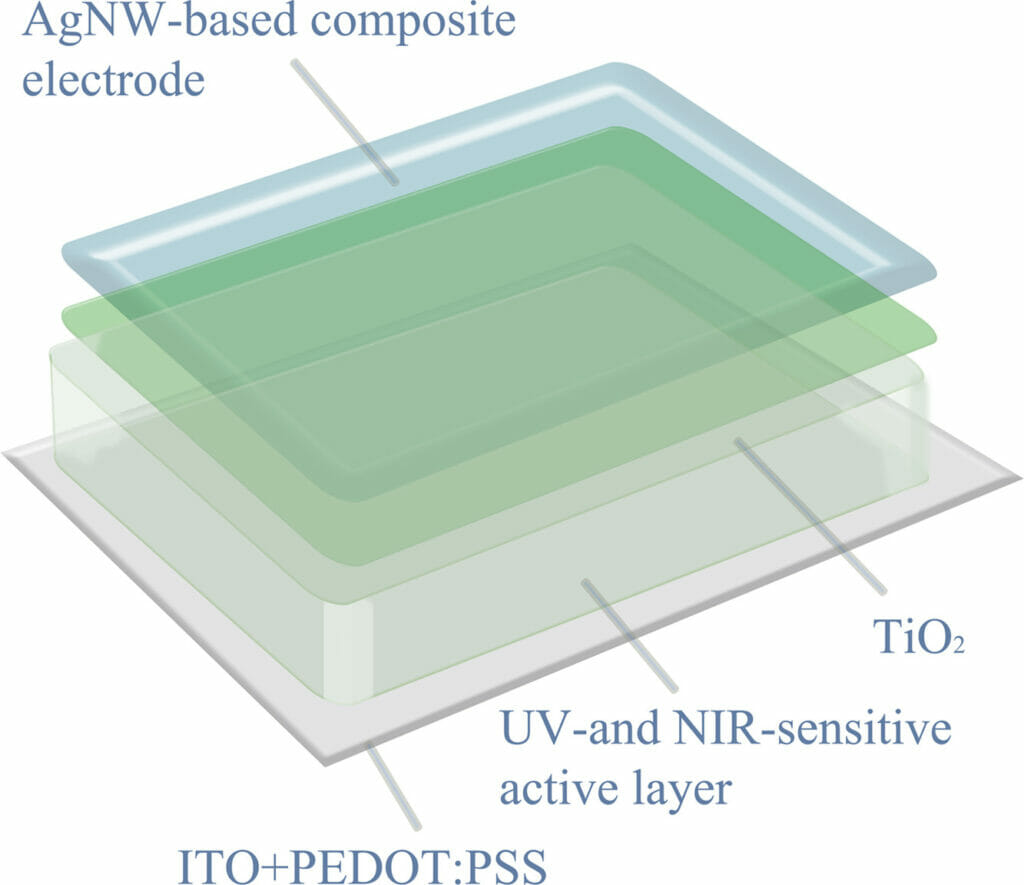

[…] to the load, can enable emergency lighting for 5 hours. Also, with changing and advancing solar cell technology, these methods can also be further […]
[…] proximity to the load, can enable emergency lighting for 5 hours. Also, with changing and advancing solar cell technology, these methods can also be further […]